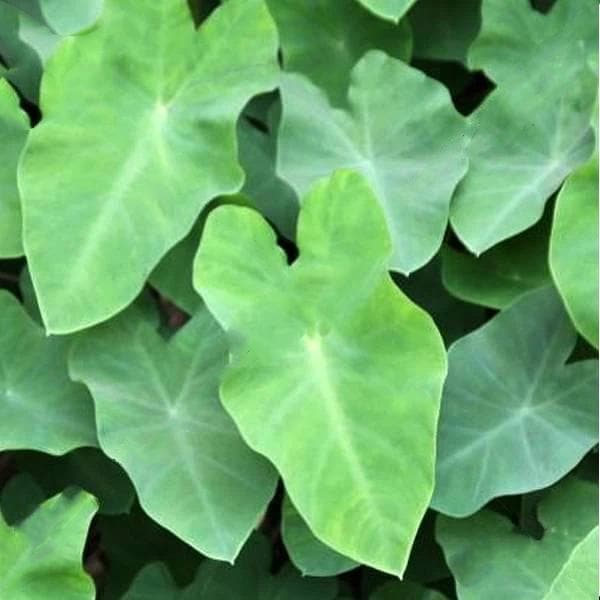
Alocasia esculata - Plant
(MRP Inclusive of all taxes)
- Shipping ₹79 for entire order
- Dispatch in 7 days
- Country of origin: India

(MRP Inclusive of all taxes)
 Save 29%
Save 29%
Air Purifier Money Plant with Pot The Air Purifier Money Plant, also known as Pothos or Epipremnum aureum, is a stunning indoor plant that...
View full details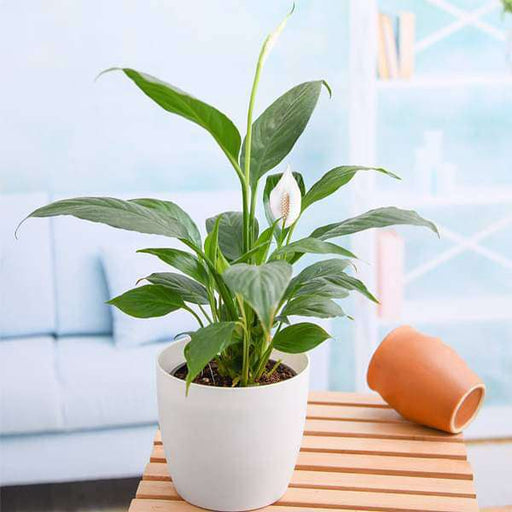
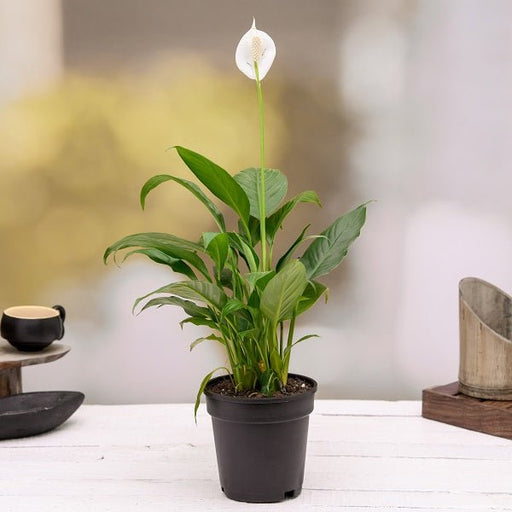 Save up to 15%
Save up to 15%
Peace Lily, Spathiphyllum - Plant The Peace Lily, scientifically known as Spathiphyllum, is a stunning houseplant celebrated for its elegant white...
View full details
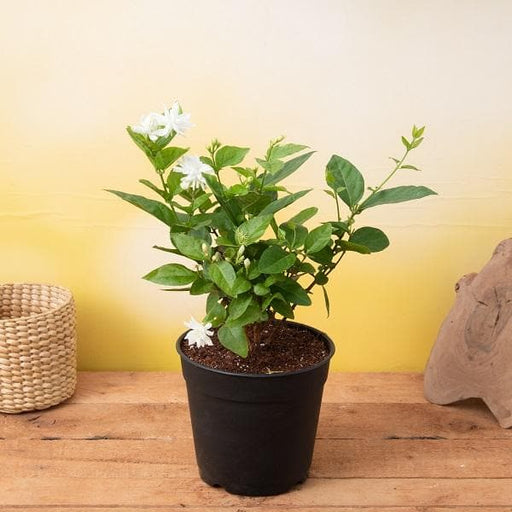 Save 25%
Save 25%
Jasminum sambac, Mogra, Arabian Jasmine - Plant Jasminum sambac, commonly known as Mogra or Arabian Jasmine, is a fragrant flowering plant...
View full details
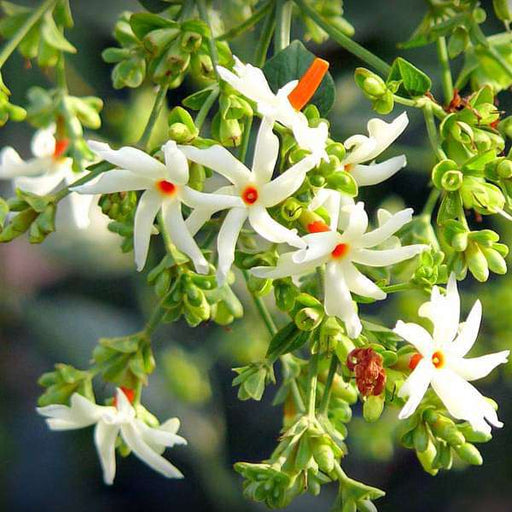 Save 18%
Save 18%
Combo Constituents Includes the Parijat Tree (Night-Flowering Jasmine), a culturally significant plant with fragrant flowers. Description The Pari...
View full details
 Save 25%
Save 25%
Miniature Rose, Button Rose (Any Color) - Plant The Miniature Rose, also known as the Button Rose, is a charming and compact flowering plant that ...
View full details Save 25%
Save 25%
Damascus Rose, Scented Rose (Any Color) - Plant The Damascus Rose, also known as Rosa damascena, is a timeless symbol of beauty and romanc...
View full details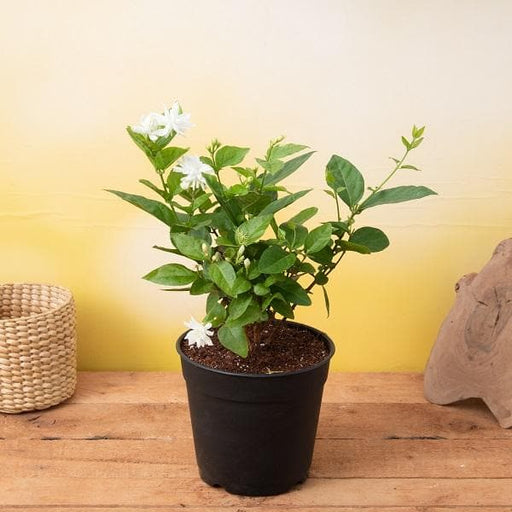
 Save 17%
Save 17%
Beautiful Fragrant Mogra, Arabian Jasmine Plant with Pot The Beautiful Fragrant Mogra, also known as Arabian Jasmine (Jasminum sambac), is...
View full details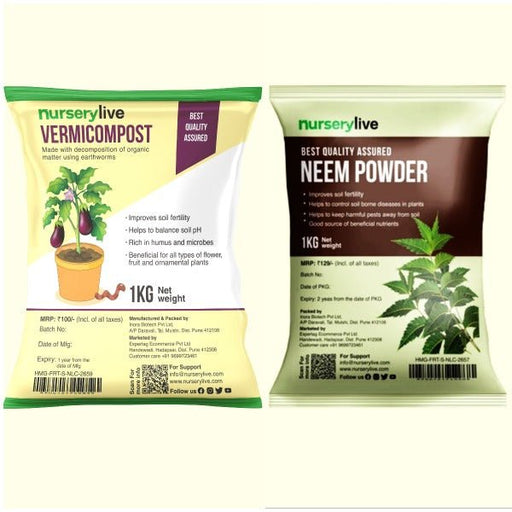 Save 15%
Save 15%
Pack of Vermicompost and Neem Cake for House Plants Transform your indoor garden with our premium Pack of Vermicompost and Neem Cake, spec...
View full details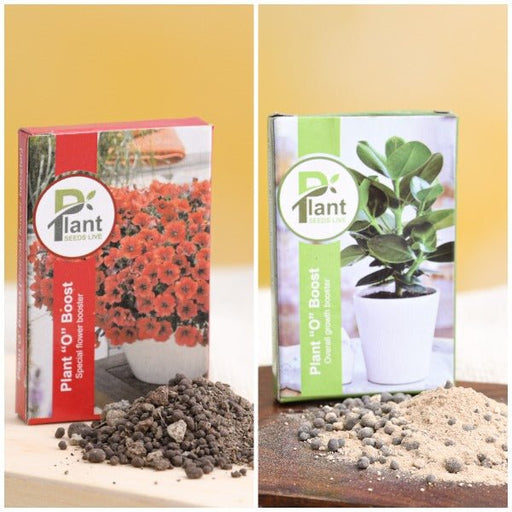
Pack of Plant Growth and Flower Boosters Unlock the full potential of your garden with our Pack of Plant Growth and Flower Boosters! This ...
View full details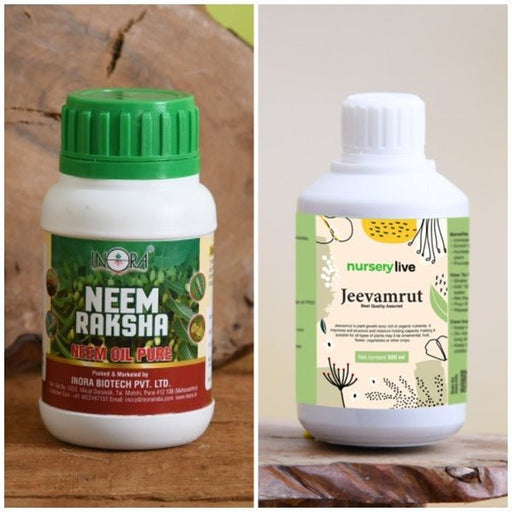 Save 38%
Save 38%
Combo of Jeevamrut and Neem Raksha for Easy Growth and Protection of Houseplants Transform your indoor garden with our exclusive combo of ...
View full details Save 22%
Save 22%
Plant Nutrients Kit (Pack of 16) for a Healthy Garden Transform your garden into a lush paradise with our Plant Nutrients Kit, featuring 1...
View full details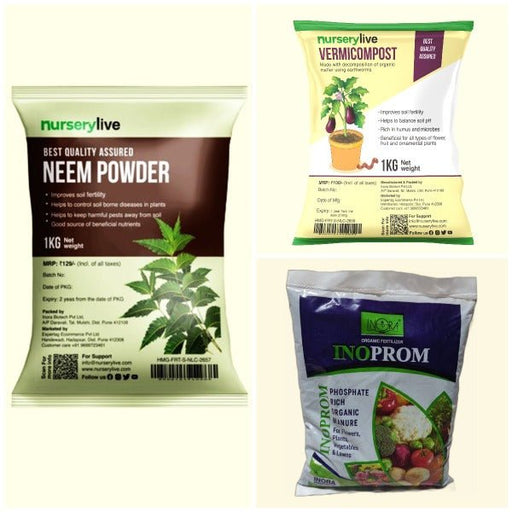 Save 16%
Save 16%
Combo of Top Plant Fertilizers Elevate your gardening game with our exclusive Combo of Top Plant Fertilizers, featuring two bags of premiu...
View full details Save 24%
Save 24%
Pack of 4 Additives to Make Soil Healthy and Nutrient Rich Transform your garden into a thriving ecosystem with our Pack of 4 Additives de...
View full details Save 30%
Save 30%
Transform your gardening experience with our premium Combo of Perlite and Vermiculite. This unique blend is designed to enhance soil aeration and ...
View full details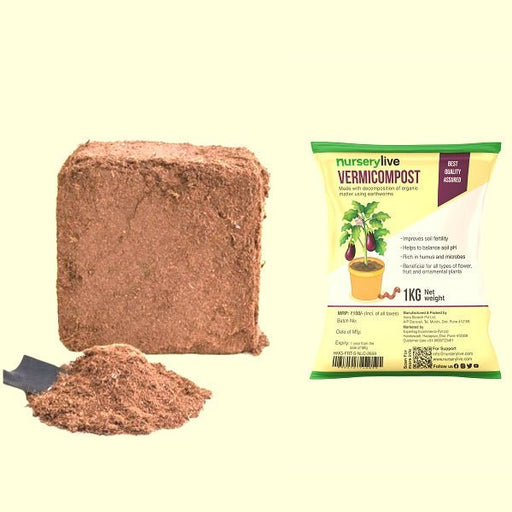 Save 27%
Save 27%
Combo of 2 Vermicompost and Cocopeat - Enrich Your Soil Naturally! Transform your garden into a thriving ecosystem with our Combo of 2 Ver...
View full details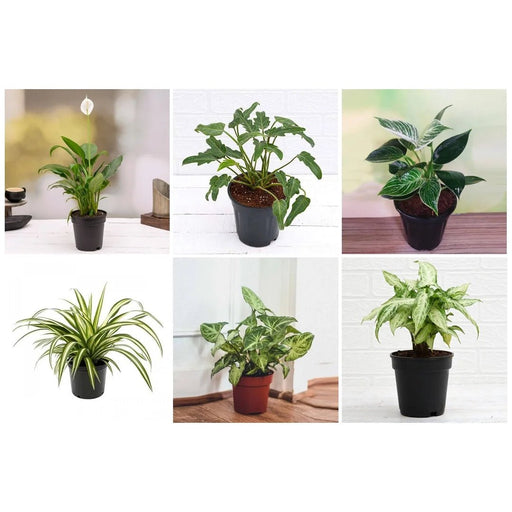
 Save 35%
Save 35%
Best 6 Plants for Perfect Indoor Garden Transform your living space into a lush oasis with our curated collection of the Best 6 Plants for a...
View full details
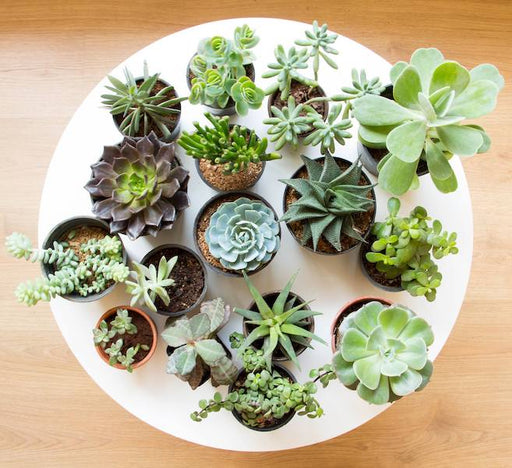 Save up to 50%
Save up to 50%
Mini Succulent Garden Pack Transform your space with our Mini Succulent Garden Pack, featuring a delightful collection of 4 any variety beautiful s...
View full details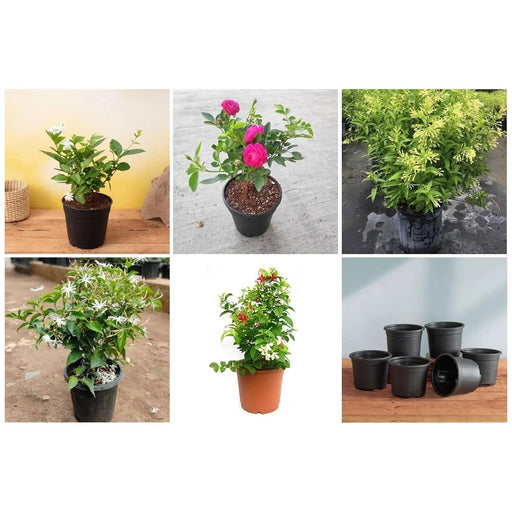
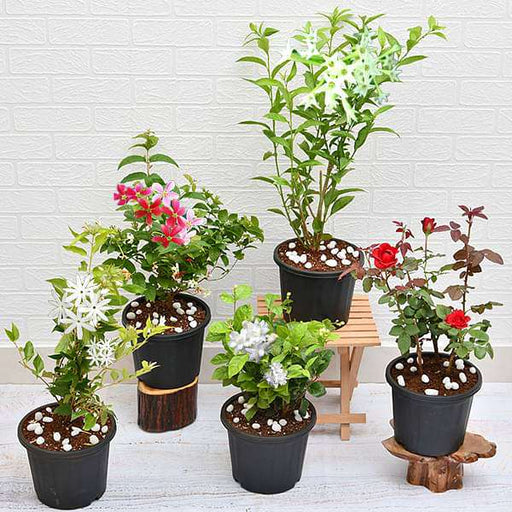 Save 30%
Save 30%
5 Best Fragrant Plants Transform your garden or indoor space into a fragrant paradise with our curated selection of the 5 Best Fragrant Plants. Th...
View full details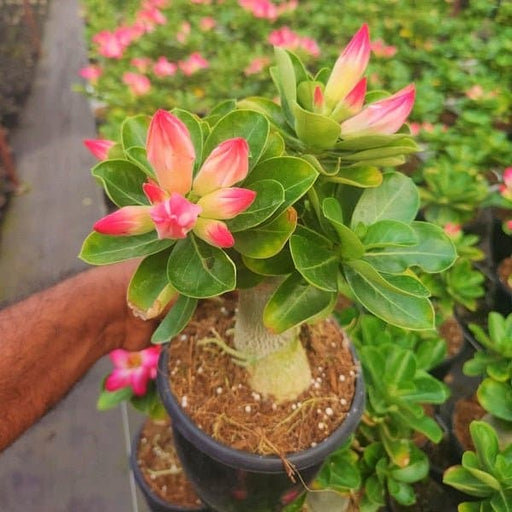
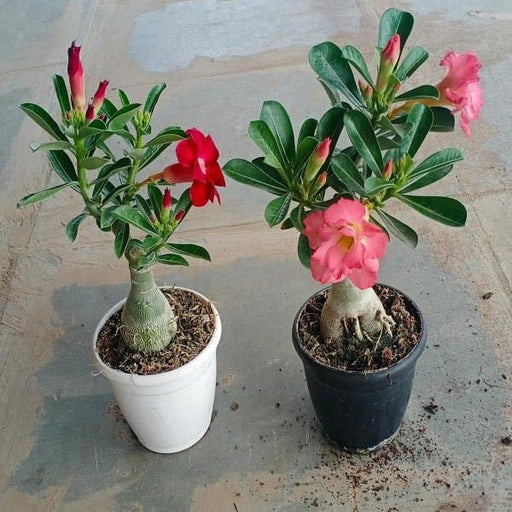 Save 24%
Save 24%
Set of 2 Bonsai Looking Grafted Adeniums Transform your indoor or outdoor space with our exquisite Set of 2 Bonsai Looking Grafted Adenium...
View full details Save 45%
Save 45%
Top 4 Die Hard Succulents Pack Transform your indoor or outdoor space with our Top 4 Die Hard Succulents Pack, featuring a curated selecti...
View full details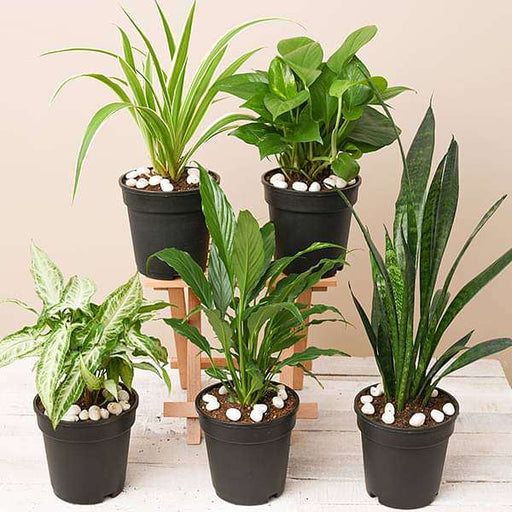
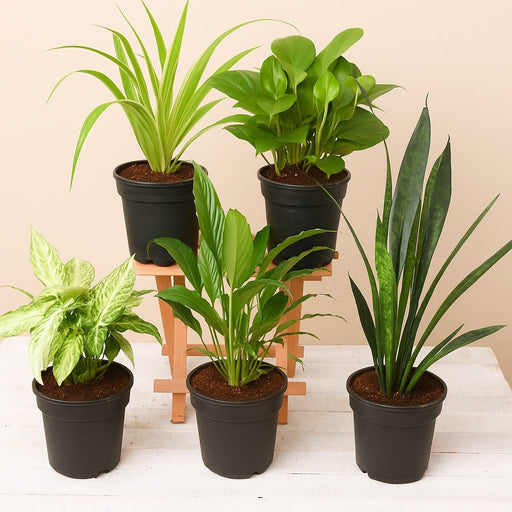 Save 30%
Save 30%
5 Best Indoor Plants Pack Transform your living space into a lush oasis with our '5 Best Indoor Plants Pack.' This carefully curated collection fe...
View full details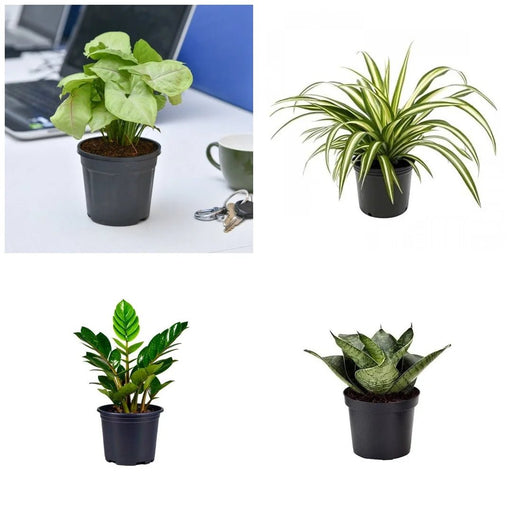
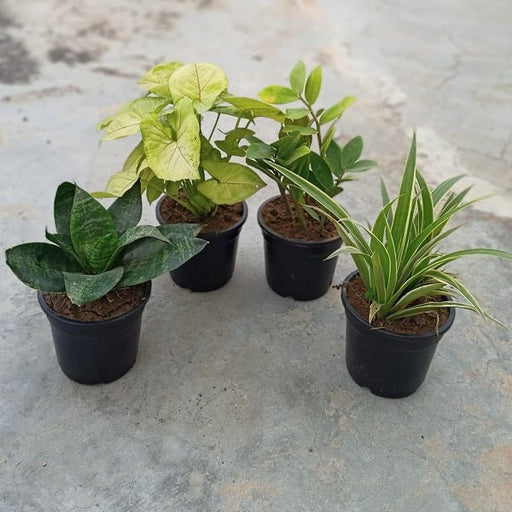 Save 25%
Save 25%
Set of 4 Evergreen Air Purifier Plant Pack Transform your indoor space into a lush, green oasis with our Set of 4 Evergreen Air Purifier Pla...
View full details| SrNo | Item Name |
|---|---|
| 1 | Alocasia esculata - Plant |
The Alocasia esculata, commonly known as the Elephant Ear Plant, is a stunning tropical perennial native to Southeast Asia. With its striking arrow-shaped leaves that can grow up to 3 feet long, this plant adds a dramatic flair to any indoor or outdoor space. Its lush foliage not only enhances aesthetic appeal but also contributes to improved air quality, making it a perfect addition to your home or office.
What sets Alocasia esculata apart is its unique ability to thrive in low-light conditions while still producing vibrant, glossy leaves. This plant is not just a visual delight; it also has historical significance in traditional medicine, where its tubers have been used for various health benefits. With proper care, this resilient plant can become a centerpiece in your botanical collection.
Special features of the Alocasia esculata include its impressive growth rate and adaptability to different environments. Its large leaves can capture sunlight efficiently, making it a great choice for both novice and experienced plant enthusiasts.
Alocasia esculata plays a vital role in its ecosystem by providing habitat and food for various insects and wildlife. Its ability to purify the air contributes positively to indoor environments, making it a sustainable choice for eco-conscious plant lovers.
If you think caring for Alocasia esculata is like a walk in the park, think again! This plant is a diva that demands attention. It craves bright, indirect sunlight and a well-draining potting mix. Water it when the top inch of soil feels dry, but don’t drown it—this isn’t a swimming competition! Keep humidity levels high, and your plant will reward you with stunning foliage that could make even the most seasoned plant parent green with envy.
Ready to expand your plant family? Propagating Alocasia esculata is like playing plant matchmaker. You can do it through offsets or division. Just make sure each new plant has a healthy root system. It’s a delicate dance, but with a little patience and care, you’ll have a mini jungle in no time. Just remember, every new plant is a commitment—don’t let them down!
Ah, the uninvited guests of the plant world! Alocasia esculata can attract pests like spider mites and aphids, which are about as welcome as a mosquito at a picnic. Keep an eye out for these little troublemakers and act fast. Neem oil or insecticidal soap can be your best friends in this battle. Remember, a healthy plant is a happy plant, and a happy plant doesn’t attract pests!
The right soil is like a cozy bed for your Alocasia esculata. It needs a well-draining mix that retains some moisture but doesn’t turn into a swamp. A blend of potting soil, perlite, and orchid bark is a winning combination. Think of it as the perfect recipe for plant happiness. After all, a happy plant is a thriving plant, and who doesn’t want a thriving plant?
Light is the lifeblood of your Alocasia esculata. It thrives in bright, indirect sunlight, so don’t go shoving it in a dark corner like a forgotten sock. Too much direct sunlight can scorch those beautiful leaves, while too little can leave it sulking. Find that sweet spot, and your plant will reward you with lush, vibrant foliage that’s the envy of all your friends.
If you want your Alocasia esculata to feel at home, crank up the humidity! This tropical beauty loves a humid environment, so consider misting it or placing it on a pebble tray filled with water. Think of it as a spa day for your plant. The higher the humidity, the happier your Alocasia will be, and who doesn’t want a happy plant? Just don’t forget to check for signs of stress!
Alocasia esculata is a bit of a temperature snob. It prefers a cozy range of 65°F to 80°F. Anything below 60°F, and it might just throw a tantrum. Keep it away from drafts and sudden temperature changes, or you might find it sulking in the corner. Treat it like royalty, and it will reward you with stunning foliage that makes your home feel like a tropical paradise.
Alocasia esculata is toxic if ingested. It contains calcium oxalate crystals, which can cause irritation and discomfort. So, while it’s a stunning addition to your plant collection, keep it out of reach of curious little hands and paws. It’s a beautiful plant, but safety first—no one wants a plant party to turn into a plant panic!
Did you know there are different varieties of Alocasia esculata? Each one has its own unique charm, from leaf shape to color. Exploring these varieties is like going on a plant safari in your own home. Whether you prefer the classic look or something a bit more exotic, there’s an Alocasia esculata for everyone. Collect them all, and you’ll have a botanical masterpiece that’s sure to impress!
Repotting your Alocasia esculata is like giving it a fresh start. It’s best done every couple of years or when it outgrows its pot. Choose a pot that’s one size larger and refresh that soil. Just be gentle with those roots—think of it as a delicate dance rather than a wrestling match. A successful repotting will have your plant thriving and ready to show off its stunning leaves.
Beyond its stunning looks, Alocasia esculata offers a plethora of benefits. It’s known to purify the air, making your home feel fresher and cleaner. Plus, caring for plants can reduce stress and boost your mood. So, not only do you get a gorgeous plant, but you also get a little slice of zen in your life. Who knew that a plant could be both a beauty and a therapist?
Alocasia esculata, also known as the African Mask Plant, is a stunning tropical beauty with striking arrow-shaped leaves. This plant is not just a pretty face; it thrives in bright, indirect light and loves humidity. Perfect for plant parents who want to add a touch of exotic flair to their indoor jungle!
Caring for Alocasia esculata is like pampering a diva! Keep the soil consistently moist but not soggy, and provide high humidity. Water when the top inch of soil dries out, and give it bright, indirect light. Remember, this plant loves attention, so don’t let it feel neglected or it might sulk!
Alocasia esculata thrives in warm, humid environments—think tropical paradise! Aim for temperatures between 65°F to 80°F and humidity levels above 60%. Place it near a humidifier or in a bathroom with good light. Just don’t let it get too cold; this plant isn’t a fan of chilly drafts!
Watering Alocasia esculata is a delicate dance! Check the top inch of soil; if it’s dry, it’s time for a drink. Typically, this means watering every 1-2 weeks, but it depends on your home’s humidity. Just remember, soggy roots are a no-go, so don’t drown your leafy friend!
Yes, Alocasia esculata loves a good feast! During the growing season (spring and summer), feed it with a balanced liquid fertilizer every 4-6 weeks. In fall and winter, let it take a break—just like you after a holiday feast. Too much fertilizer can lead to a plant with a bad case of the jitters!
Yes, Alocasia esculata is a no-go for furry friends! This plant contains calcium oxalate crystals, which can cause irritation if ingested. Keep it out of reach of curious cats and dogs. If your pet decides to take a nibble, a trip to the vet might be in order—better safe than sorry!
Absolutely! Propagating Alocasia esculata is like sharing the love. You can do this through division during repotting. Carefully separate the offsets from the main plant, ensuring each has roots. Replant them in their own pots, and voilà! You’ve got new leafy companions to brighten your space.
Keep an eye out for pesky pests like spider mites, aphids, and mealybugs. These little troublemakers love to munch on your Alocasia esculata. Regularly inspect your plant and wipe down leaves with a damp cloth. If you spot any uninvited guests, a gentle insecticidal soap can send them packing!
Repotting Alocasia esculata is like giving it a fresh start! Choose a pot that’s 1-2 inches larger in diameter and fill it with well-draining potting mix. Gently remove the plant from its old pot, loosen any tangled roots, and place it in the new pot. Water it well and watch it thrive!
Yellowing leaves on your Alocasia esculata could be a cry for help! This could indicate overwatering, underwatering, or insufficient light. Check the soil moisture and adjust your watering routine. If it’s too dark, move it to a brighter spot. Your plant will thank you with vibrant, happy leaves!
Boosting humidity for your Alocasia esculata is like throwing a tropical party! Use a humidifier, mist the leaves regularly, or place a pebble tray filled with water beneath the pot. Grouping plants together can also create a mini rainforest effect. Your plant will thrive in the steamy atmosphere—just like it loves!